The Honeywell 6000 WiFi Thermostat offers advanced smart home technology, enabling seamless temperature control via the Total Connect Comfort app. Designed for energy efficiency and ease of use, it integrates with various HVAC systems, providing remote access and scheduling capabilities. Its sleek design and user-friendly interface make it a popular choice for modern homes.
1.1 Overview of the Honeywell 6000 WiFi Thermostat
The Honeywell 6000 WiFi Thermostat is a smart, programmable device designed to enhance home comfort and energy efficiency. It offers remote access via the Total Connect Comfort app, allowing users to control temperatures, schedule settings, and receive notifications. Compatible with various HVAC systems, it supports heat pumps, dual-fuel systems, and traditional heating/cooling setups. Its intuitive interface and WiFi connectivity make it easy to manage energy usage and maintain optimal home comfort from anywhere.
1.2 Key Features and Benefits
The Honeywell 6000 WiFi Thermostat features a color touchscreen, geofencing, and smart scheduling. It offers energy-saving modes, remote access, and compatibility with smart home systems. The thermostat provides real-time energy usage reports, helping users optimize their consumption. Its adaptive recovery feature ensures consistent temperatures, while the automatic software updates keep the system current. These features enhance comfort, convenience, and energy efficiency, making it a versatile and user-friendly smart thermostat solution for modern homes.

System Requirements and Compatibility
The Honeywell 6000 WiFi Thermostat requires a C-wire for proper operation and is compatible with most HVAC systems, including heat pumps and dual-fuel setups. It supports 18-22 AWG wires and works with single-stage or multi-stage systems, ensuring versatility for various home configurations.
2.1 Checking Compatibility with Your HVAC System
Before installing the Honeywell 6000 WiFi Thermostat, ensure compatibility with your HVAC system. Verify your system type, such as heat pump, gas furnace, or dual-fuel, and check wire compatibility (18-22 AWG). A C-wire is required for proper operation. Confirm your system’s power requirements and stage configuration (single-stage, multi-stage, or modulating). Incompatible systems may lead to reduced functionality or safety hazards. If unsure, consult a professional or refer to your HVAC system’s manual for detailed specifications.
2.2 technical Specifications and Requirements
2.2 Technical Specifications and Requirements
The Honeywell 6000 WiFi Thermostat requires a 24VAC power supply and uses 18-22 AWG wires. A C-wire is mandatory for operation. It supports systems with 1-2 stages of heating and cooling. Compatibility includes heat pumps, gas furnaces, and dual-fuel systems. Ensure your HVAC system matches these specifications for proper installation and functionality. Refer to your system’s manual for exact requirements to avoid installation issues and ensure optimal performance.
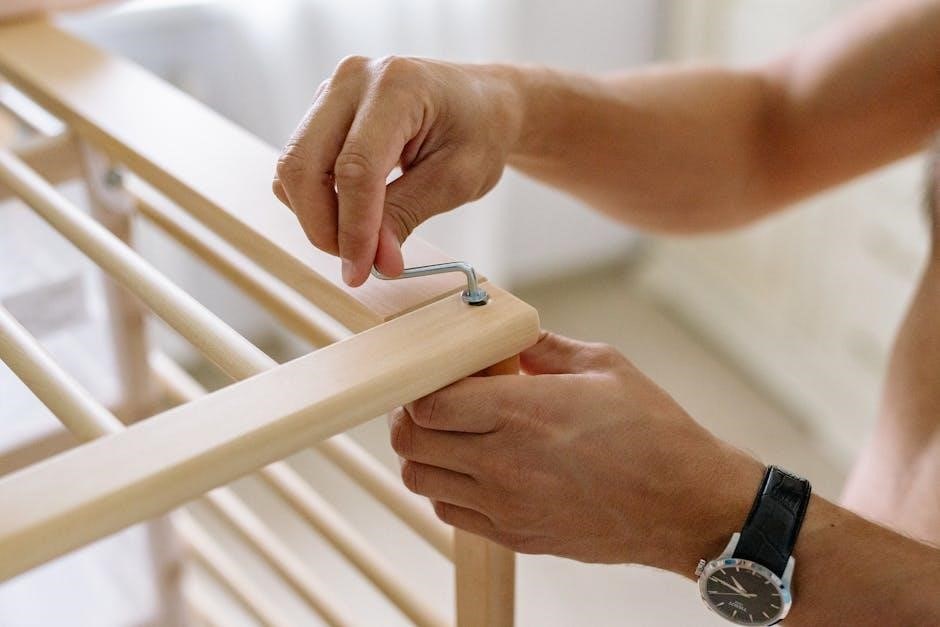
Pre-Installation Steps
Before installing, ensure the area is clear and power is disconnected. Verify compatibility and prepare tools for a smooth installation process.
3.1 Disconnecting Power to Your HVAC System
Before starting installation, ensure your HVAC system is powered off. Locate the circuit breaker or switch controlling the system and turn it off. Verify the system is completely powered down to avoid electrical shock. This step is crucial for safety and ensures a smooth installation process. Always refer to your Honeywell 6000 WiFi manual for specific instructions tailored to your system.
3.2 Preparing the Installation Area
Clear the area around your existing thermostat of debris or obstructions. Remove the old thermostat but leave the wires connected to the wall. Insert the reference card provided with the Honeywell 6000 into the wallplate to guide wire connections. Ensure the area is clean and dry to prevent any issues during installation. Use 18- to 22-gauge wires for connections, as specified in the manual. Proper preparation ensures a smooth and safe installation process for your new thermostat.

Physical Installation of the Thermostat
Mount the wallplate, ensuring it is level and secure. Attach the thermostat to the wallplate, connecting the wires according to the reference card. Tighten all connections firmly to ensure proper function and safety.
4.1 Mounting the Wallplate
Disconnect power to your HVAC system for safety. Ensure the wall is level and clean. Use the provided screws and anchors to secure the wallplate firmly. Align the wallplate with existing wiring holes. Gently insert the reference card into the wallplate after mounting. Verify the wallplate is straight and tightly fastened. This step ensures a stable base for the thermostat. Refer to the manual for specific wall type (drywall, plaster) instructions. Proper mounting is crucial for accurate temperature sensing and operation.
4.2 Connecting Wires to the Thermostat
Match the labeled wires from your HVAC system to the corresponding terminals on the thermostat. Gently insert each wire into its designated terminal, ensuring a secure connection. Use the provided screws to tighten the wires firmly. Avoid over-tightening, which could damage the terminals. Double-check all connections to ensure they are correct and snug. Refer to the wiring diagram in the manual for specific terminal assignments. Proper wiring ensures accurate system control and functionality.
4.3 Securing the Thermostat to the Wall
Once the wallplate is installed, align the thermostat with the wallplate’s mounting points. Use the provided screws to secure the thermostat firmly to the wallplate. Ensure the screws are tightened adequately to prevent any movement but avoid over-tightening, which could damage the device. If necessary, use wall anchors for additional stability, especially on drywall. After securing, gently test the thermostat to confirm it is stable and properly fastened to the wall.
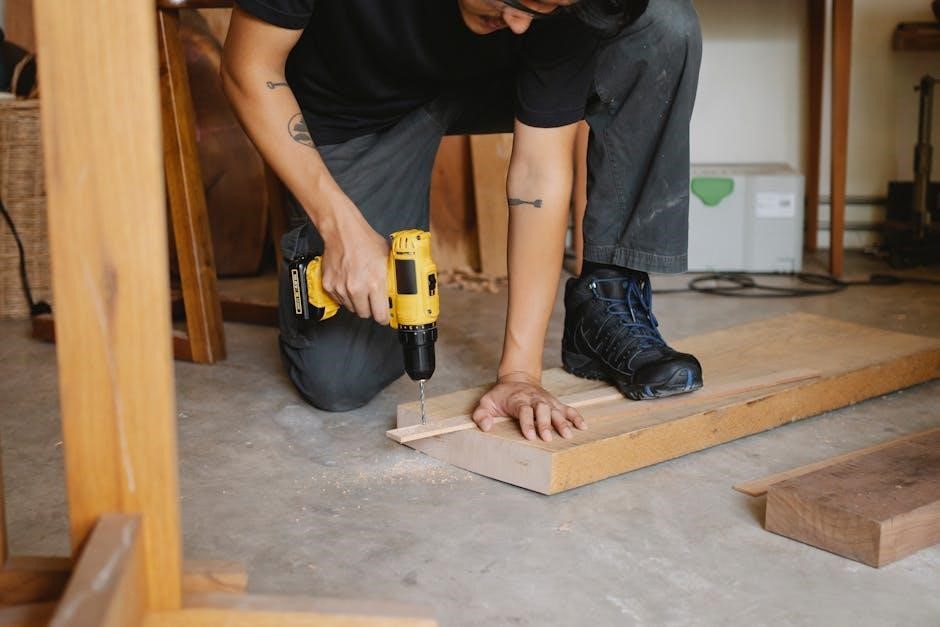
Initial Setup and Configuration
After installation, turn on the thermostat and follow on-screen prompts to set preferences like temperature, scheduling, and system type. Ensure all settings are configured correctly.
5.1 Turning On the Thermostat for the First Time
After installation, restore power to your HVAC system. The thermostat will automatically power on and display the initial setup screen. Wait for the device to complete its boot-up process, which may take a few seconds. Once the screen lights up, follow the on-screen prompts to select your preferred language, system type, and other basic settings. Ensure all configurations are correctly set before proceeding to avoid issues with operation.
5.2 Setting Up the Initial Menu and Preferences
Navigate through the initial menu to customize your thermostat settings. Select your preferred language and choose between Fahrenheit or Celsius for temperature display. Set your HVAC system type, such as heat pump or conventional, to ensure proper operation. Configure other preferences like screen brightness and auto-changeover for heating and cooling modes. Save your settings to apply them and proceed to WiFi setup or programming schedules for optimal performance and energy savings.
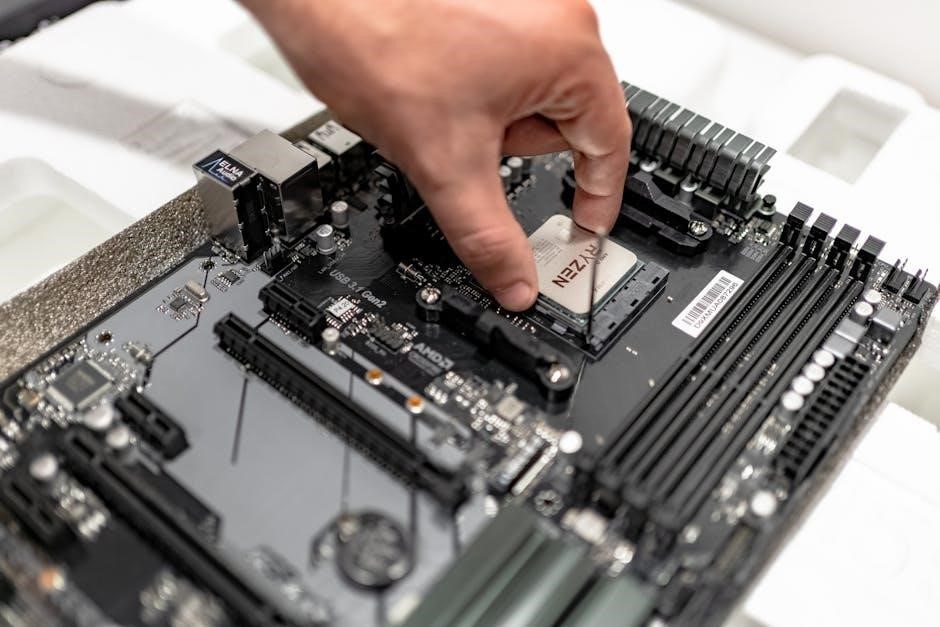
WiFi Configuration and Connectivity
To set up WiFi on your Honeywell 6000 thermostat, navigate to the network menu and select your home WiFi network. Enter the password using the touchscreen keypad. Ensure your router is functioning properly. If connection issues arise, reset the thermostat or check your network. Once connected, use the Total Connect Comfort app for remote control, allowing you to adjust settings conveniently from your smartphone or tablet. Troubleshooting steps are available if connectivity problems persist.
6.1 Connecting the Thermostat to Your Home WiFi Network
Access the thermostat’s menu and select “WiFi Setup” to begin connecting to your home network. Choose your network from the list, enter the password, and confirm. Once connected, the thermostat will link to your Honeywell Total Connect Comfort account, enabling remote control via the app. Ensure your router is operational and the thermostat is in range for a stable connection. This setup allows seamless integration with smart home systems and remote temperature management through your smartphone or tablet.
6.2 Troubleshooting WiFi Connectivity Issues
If the thermostat fails to connect to WiFi, restart both the device and router. Ensure the network password is entered correctly and the thermostat is within range of the router. Check for firmware updates and verify that your router’s security settings are compatible. If issues persist, reset the thermostat to factory settings and attempt the connection process again. Consulting the user manual or contacting Honeywell support can provide additional solutions for unresolved connectivity problems.
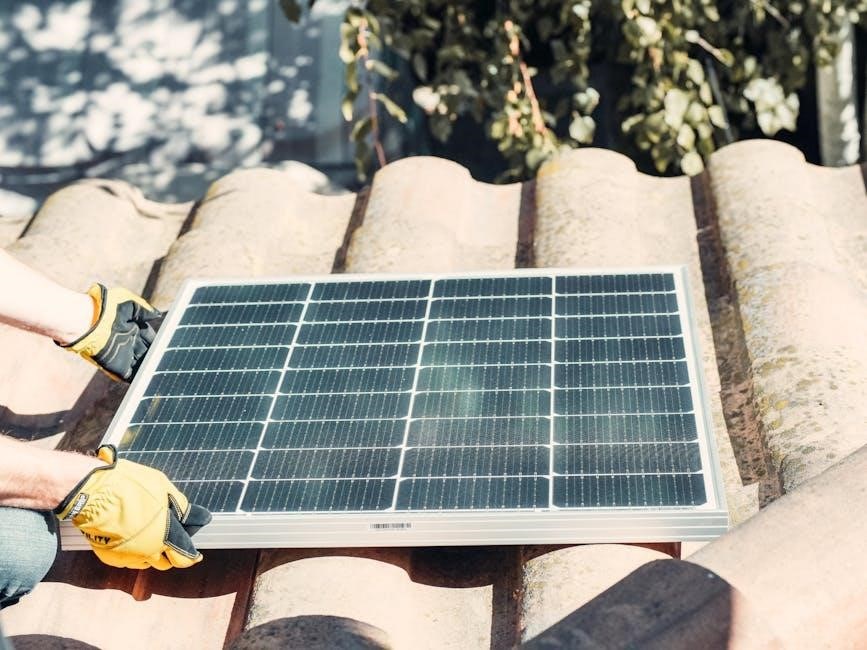
System Configuration for Heating and Cooling
Configure your HVAC system type, such as heat pump or dual-fuel, to ensure optimal performance. Proper setup guarantees efficient heating and cooling based on your home’s needs.
7.1 Setting Up Your Heating and Cooling System Type
Accurately configure your HVAC system type to ensure the Honeywell 6000 WiFi Thermostat operates correctly. Select options like heat pump, dual-fuel, or traditional systems. Proper setup guarantees efficient heating and cooling, aligning with your home’s specific needs. This step ensures the thermostat optimizes performance, saving energy while maintaining comfort.
7.2 Configuring Heat Pump and Dual-Fuel Systems
For heat pump or dual-fuel systems, ensure proper configuration in the Honeywell 6000 WiFi Thermostat. Select the correct system type in the menu to optimize performance. Heat pumps require precise settings to balance heating and cooling modes. Dual-fuel systems need configuration to synchronize with auxiliary heat sources. Incorrect setup can lead to inefficiency or system malfunctions. Refer to the manual for specific guidelines, and verify compatibility with your HVAC equipment for seamless operation.
Programming the Thermostat
Program your Honeywell 6000 WiFi Thermostat by creating schedules, adjusting temperature settings, and customizing preferences for energy efficiency and comfort. Use the app or thermostat interface to set up daily and weekly plans, ensuring optimal performance year-round.
8.1 Creating a Schedule for Your HVAC System
Creating a schedule for your HVAC system with the Honeywell 6000 WiFi Thermostat is straightforward. Use the Total Connect Comfort app or the thermostat’s interface to set temperature preferences for different times of the day. Program your system to adjust temperatures during peak hours, nighttime, or when the house is unoccupied. Customize settings for weekdays and weekends to optimize energy usage and comfort. This feature ensures your home stays cozy while saving on energy costs.
8.2 Adjusting Temperature Settings and Preferences
Adjusting temperature settings on the Honeywell 6000 WiFi Thermostat is simple and intuitive. Use the touchscreen or the Total Connect Comfort app to set your preferred temperature. Temporary adjustments can be made directly on the thermostat, while permanent changes require accessing the scheduling menu. You can also enable geofencing or smart recovery features to optimize energy usage. Adjusting temperature preferences ensures your home remains comfortable while maximizing energy efficiency and cost savings.
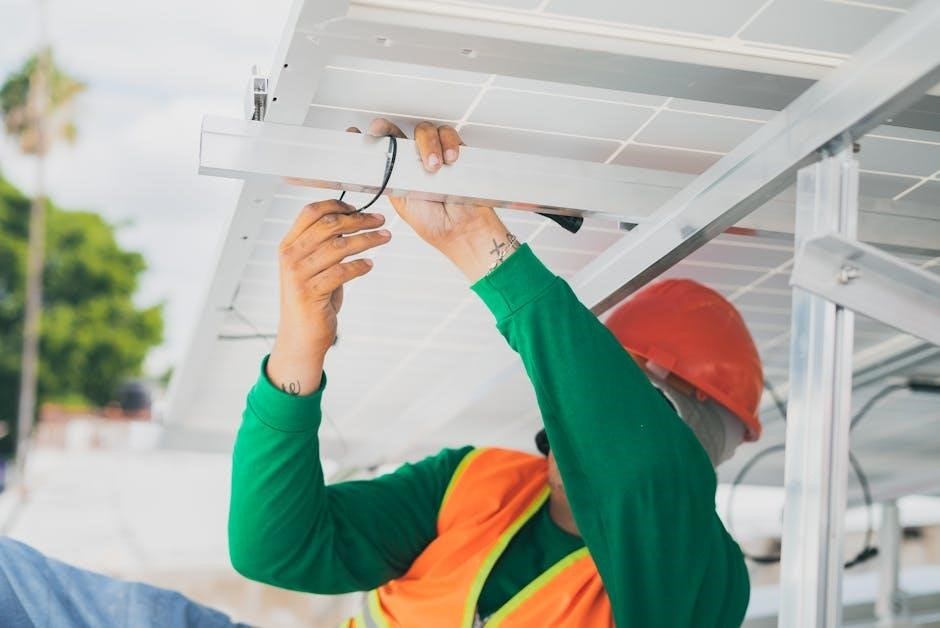
Advanced Features and Settings
The Honeywell 6000 WiFi Thermostat offers advanced features like geofencing, smart recovery, and energy usage reports. These settings optimize comfort and energy efficiency seamlessly.
9.1 Using the Total Connect Comfort App
The Total Connect Comfort app enables remote control of your Honeywell 6000 WiFi Thermostat. Users can adjust settings, view energy usage, and receive notifications. The app allows scheduling and geo-fencing for automated temperature adjustments. Compatible with smartphones and tablets, it ensures convenience and energy efficiency. Remote access requires an internet connection and an account setup.
9.2 Enabling Remote Access and Notifications
To enable remote access and notifications, connect your Honeywell 6000 WiFi Thermostat to the Total Connect Comfort app. During setup, select your home WiFi network and create an account. Notifications can be customized for temperature changes, system alerts, and maintenance reminders. Ensure your internet connection is stable for reliable remote operation. Regularly update the app for optimal performance and security.
Troubleshooting Common Issues
Identify and resolve common issues like power outages, WiFi disconnections, or temperature inaccuracies. Check wiring, restart the thermostat, and ensure stable internet connectivity for optimal performance.
10.1 Resolving Common Installation and Setup Problems
Address issues like power outages or wiring mismatches by verifying connections and ensuring compatibility with your HVAC system. If the thermostat doesn’t power on, check the circuit breaker. For WiFi setup problems, restart your router and thermostat, then reconnect to your network. Consult the manual or online support for specific error codes or troubleshooting steps. If issues persist, contact a professional for assistance.
10.2 Fixing Issues with Temperature Control and WiFi
If temperature control is inconsistent, check sensor accuracy and ensure proper calibration. For WiFi issues, restart the thermostat and router, then reconnect to the network. Ensure firmware is updated. If the thermostat doesn’t respond, verify wiring connections and power supply. Consult the manual or Honeywell support for specific troubleshooting guides. Persistent problems may require professional assistance to resolve.

Maintenance and Upkeep
Regularly clean the thermostat and check wiring connections. Ensure proper power supply and update software periodically. Maintain air filters and inspect system performance for optimal functionality.
11.1 Cleaning and Updating Your Thermostat
Regularly clean the thermostat’s display and surface with a soft, dry cloth to prevent dust buildup. Avoid using harsh chemicals or liquids, as they may damage the device. For software updates, ensure your thermostat is connected to WiFi and check for available updates through the Total Connect Comfort app or the Honeywell website. Updating ensures you have the latest features and security patches. Always disconnect power before cleaning to avoid any accidental damage or malfunction.
11.2 Ensuring Optimal Performance Over Time
Regular maintenance ensures your Honeywell 6000 WiFi Thermostat performs optimally. Calibrate the thermostat annually to maintain accurate temperature readings. Check and replace air filters as needed to prevent system strain. Monitor the thermostat’s operation for unusual behavior and address issues promptly; Ensure all software updates are installed to maintain functionality and security. Periodically inspect wiring connections to avoid loose contacts. By following these steps, you can extend the lifespan of your thermostat and ensure reliable performance year-round.

FAQs and Common Questions
Common questions include troubleshooting connectivity issues, resolving installation problems, and understanding advanced features. Refer to the manual or Honeywell’s support for detailed solutions and guidance.
12.1 Frequently Asked Questions About Installation
Common installation questions include compatibility checks, wiring requirements, and power disconnection procedures. Users often ask about system type configuration and ensuring proper thermostat mounting. Additionally, inquiries arise regarding WiFi setup during installation and resolving initial connectivity issues. Referencing the manual or Honeywell’s support resources can provide clear guidance for a smooth setup process, ensuring optimal performance and functionality of the Honeywell 6000 WiFi Thermostat.
12.2 Common Concerns and Solutions for Users
Users often face issues like delayed temperature responses or inconsistent WiFi connectivity. Solutions include restarting the thermostat, checking network stability, and ensuring firmware updates. Some report scheduling errors, which can be resolved by recalibrating the system or resetting preferences. Additionally, concerns about energy efficiency are addressed by optimizing settings through the Total Connect Comfort app. Regular maintenance, such as cleaning the thermostat, also helps maintain optimal performance. Always refer to the manual or Honeywell support for tailored troubleshooting.
The Honeywell 6000 WiFi Thermostat is a smart, energy-efficient solution for modern homes, offering seamless control and remote access through the Total Connect Comfort app.
13.1 Summary of the Installation Process
The Honeywell 6000 WiFi Thermostat installation involves several key steps, starting with disconnecting power to your HVAC system for safety. Prepare the installation area by removing the old thermostat and ensuring a clean workspace. Mount the wallplate and connect the wires according to the system requirements. Secure the thermostat to the wall and power it on. Complete the initial setup, including WiFi configuration, and configure your heating and cooling settings. Follow the manual for troubleshooting and optimization.
13.2 Tips for Getting the Most Out of Your Honeywell 6000 WiFi Thermostat
To maximize efficiency, use the Total Connect Comfort app for remote temperature adjustments and scheduling. Enable geofencing to automatically adjust settings based on your location. Regularly review energy reports to optimize usage and reduce costs. Update your thermostat software periodically for improved performance and security. Explore advanced features like smart alerts and adaptive recovery to enhance comfort and energy savings. By leveraging these tips, you can ensure your Honeywell 6000 WiFi Thermostat operates at its best.
